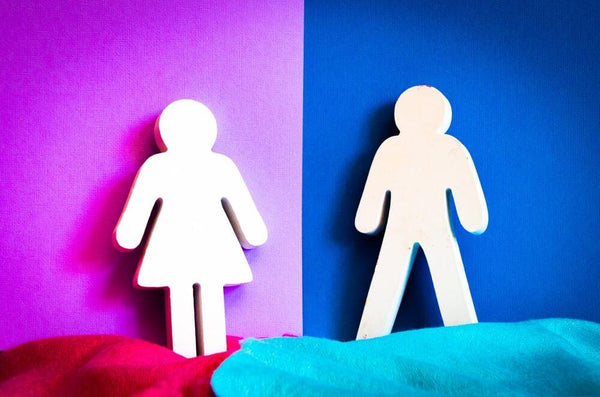Why Is Pink a Girl Color and Blue a Boy Color?

Sexism in colors has created great trouble for parents. Often, while shopping for clothes, you select a whole pink dress or some pinkish touch for your boy, but you end up leaving that outfit because pink is not for boys. The same happens for young girls’ shopping since they reject every blue item saying, this is a boy color. Sometimes, your boy selects a pink outfit, but you are afraid of breaking the stereotype of pink, a girly color.
So why is pink color a girl color and blue a boy color? In the mid-19th century, pastel colors were introduced for baby clothing. Until the 20th century, these colors were not gender specific. Later, gender testing intrigued designers to make gender-specific clothes. Initially, pink was a boy’s color, and blue was for girls. Later, it was decided that pink should be for girls since it is delicate and blue is more robust, so it should be for boys.
Read this post if you want to kill the curiosity about why pink is for girls and blue for boys.
Why Did Pink Become for Girls and Blue for Boys?

In U.S hospitals, pink and blue outfits are used to signify boys and girls. So, why did pink become for girls and blue for boys? Before the popularity of pastel colors, people dressed their kids white until they were six years old. Pastel colors were introduced in mid 19th century; these colors were not gender-specific until the 20th century.
At the start of the 20th century, several famous clothing stores suggested pink for boys and blue for girls. The trend changed in 1940 when baby boomers dressed their boys in blue and girls in pink. They claimed that pink is a delicate color that suits girls and blue is vigorous, perfect for boys. With a surge in gender-oriented activities in 1980 and onward, pink became a fashion trend for girls and blue for boys.
When Did Pink Become for Girls and Blue for Boys?

In 1940, baby boomers started dressing their kids in sex-specific clothing. For those with no idea of baby boomers, let’s explain. After World War 2 in 1945, there was a considerable surge in birth between 1946 and 1964. Due to a significant increase in births these 22 years, the individuals were named “Baby Boomers.”
After the popularization of pastel colors, two colors were selected for babies. Pink was for boys and blue for girls. Baby boomers changed this norm and started dressing kids in gender-specific colors, using pink for girls and blue clothing for boys. Though the blue and pink trend faced many rises and falls in history, after gender reveals parties, pink became a highly recommended color for girls and blue for boys.
Who Said Pink Is for Girls and Blue for Boys?
Before 1940, there were many traditional conflicts between coexisting nations. Blue for girls and pink for boys, which is opposite to the current tradition, was first noted by Paoletti. It was a trend that kept fluctuating in history. However, it only gained strength after the 1980s when people became modernized and started following fashion trends in kids’ clothing. However, there is no evidence of the person who said pink is for girls and blue for boys.
What Are Boy Colors?

Gender specific colors were less common in ancient days. The typical boy colors that you might be familiar with are blue, yellow, green. But among all colors, blue is the most prominent one. It doesn’t mean that blue is not for girls. The trend of pink for girls and blue for boys has gained hype since 1980. The masculinity and femininity in colors have no definite rules. You can dress up your boy with any color of his choice. If you want, you can break the stereotype of color specifications in genders by dressing your kids in an outfit of any color.
Is Pink a Boy Color?

Initially, pink was a boy’s color since the early 19th century. According to history, pink became a feminine color after the second world war. Now, pink is for girls. It doesn’t mean that you can’t dress up your boy in pink. In fact, you should dress up your kids in any color regardless of following the sexism in colors.




Jason, just admit colours have no natural gender whatsoever.
Colours are colours and have absolutely no natural gender whatsoever! It’s made-up!
“Pink is for girls and dowagers…” The Court Journal: Gazette of the Fashionable World. 1833
“And the princess dressed the boys in blue, and the girls in pink, and they all lived happily ever after. " The Wizard’s Palace 1893
“The boys in blue, faced with white, and the girls in pink…” Friends Intelligencer 1877
" The girls in pink frocks and straw bonnets, surrounded by pretty pink wreaths… " The Portland Magazine 1835
The myth of colour ‘gender signifiers’ being a 20th century trend is promoted by certain groups that have a vested interest in misinformation, namely feminists who parrot “gender is a social construct” – everyone else (including homosexuals and transsexuals) knows that gender (masculinity/femininity) is formed not by nurture but by Nature.